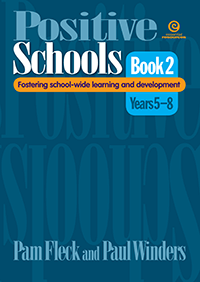Contents |
| Introduction | 4 |
| Taking a holistic approach: school culture | 5 |
| What is a positive school culture? | 5 |
| Foundations of a positive school | 6 |
| The role of leadership | 6 |
| A proactive approach to building a positive school | 8 |
| Conditions required for a positive school | 9 |
| Consultation and communication | 10 |
| Articulating the need for change | 10 |
| Useful methods of consultation | 10 |
| Entrenching effective communication | 11 |
| Positive behaviour management systems | 14 |
| Developing a positive classroom atmosphere | 14 |
| The fundamentals of restorative practice | 16 |
| The process of restorative practice | 19 |
| School-wide behaviour management plan | 20 |
| Strategies for anger management | 27 |
| Dealing with bullying | 29 |
| Engaging and motivating students | 33 |
| Engaging students with the four goals of learning | 33 |
| Keys to success | 35 |
| Making boy-friendly classrooms | 36 |
| Boys' qualities and needs | 36 |
| Short-term changes to accommodate boys' needs | 37 |
| Helping boys to progress in reading and writing | 38 |
| Working on attitude and motivation in reading and writing | 39 |
| Steps in explicit teaching of reading | 39 |
| Other writing strategies | 40 |
| Boyzone: a programme for boys at risk | 40 |
| Avoiding teacher burnout | 42 |
| Causes of burnout | 42 |
| Effects of burnout | 42 |
| How to deal with burnout | 43 |
| Nurturing community relationships | 45 |
| What does a positive school community look like? | 45 |
| Activities to promote a sense of community | 46 |
| Managing the school playground | 48 |
| Expectations for out of class behaviour | 48 |
| Organising playground activities | 48 |
| A sample of playground games and activities | 49 |


